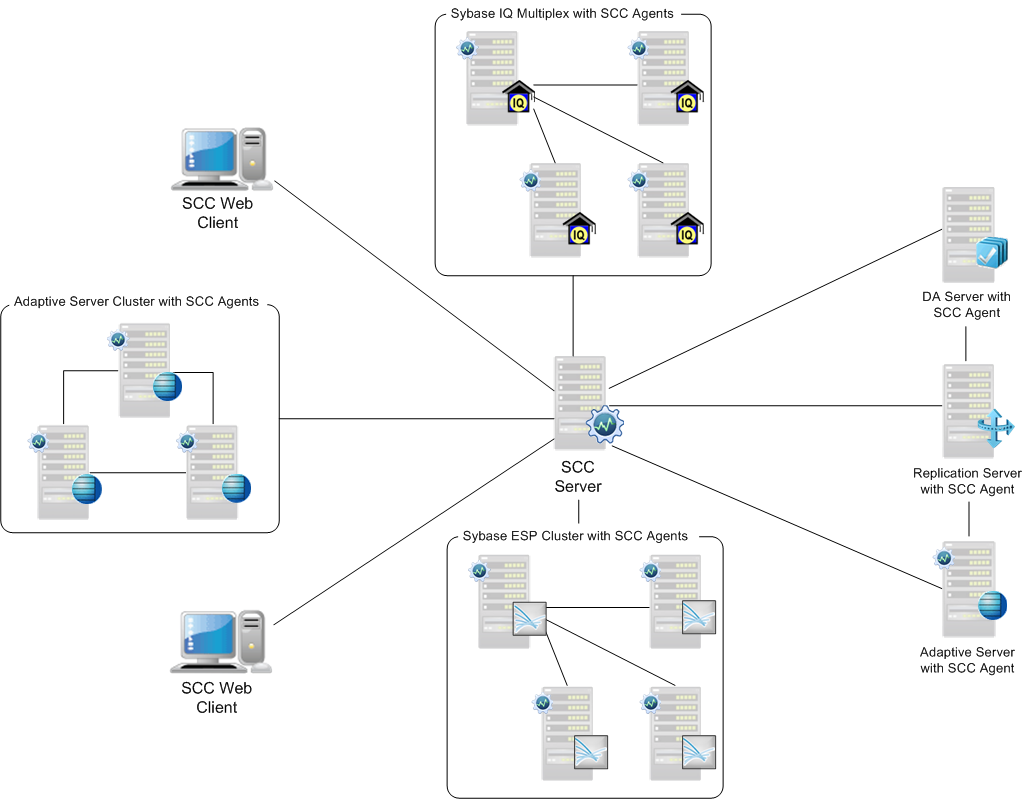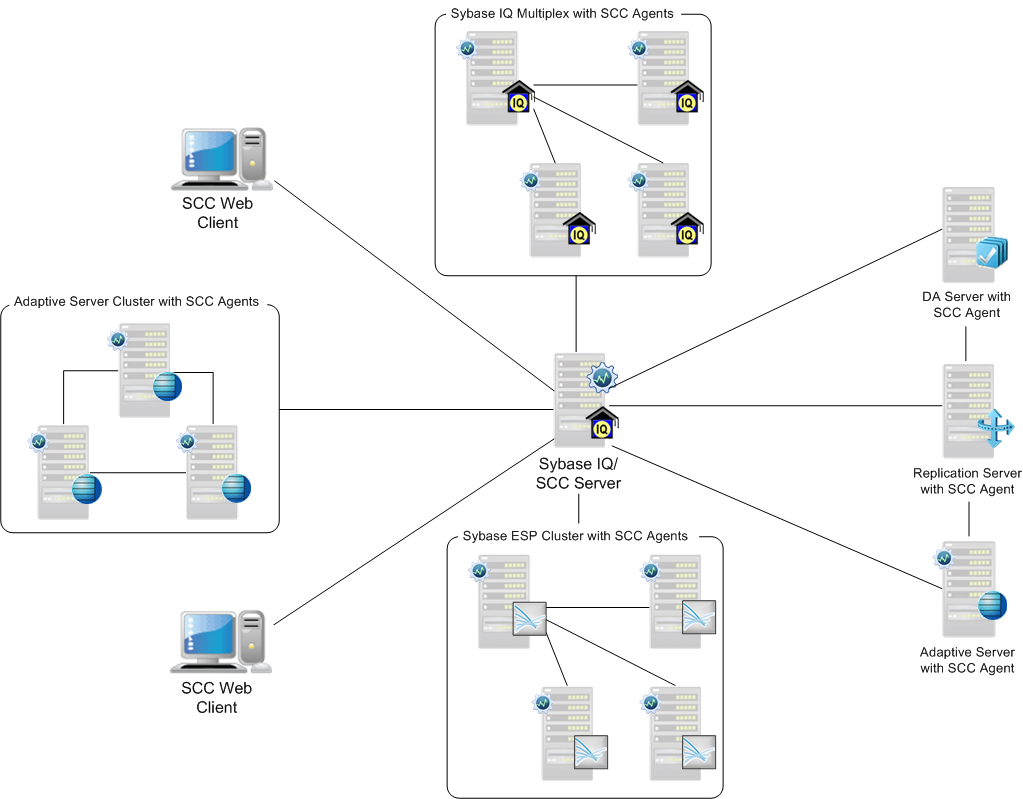Prepare for the installation.
SAP Control Center employs a Web-based multitier architecture that allows multiple SCC clients to monitor and manage all supported SAP database servers in an enterprise using a small number of SCC servers—often, you need only one. An SCC remote command and control agent is installed with each managed server that requires it. The SCC client is a rich Internet application that runs in a Web browser. It requires the Adobe Flash Player plug-in version 10.x or later.

